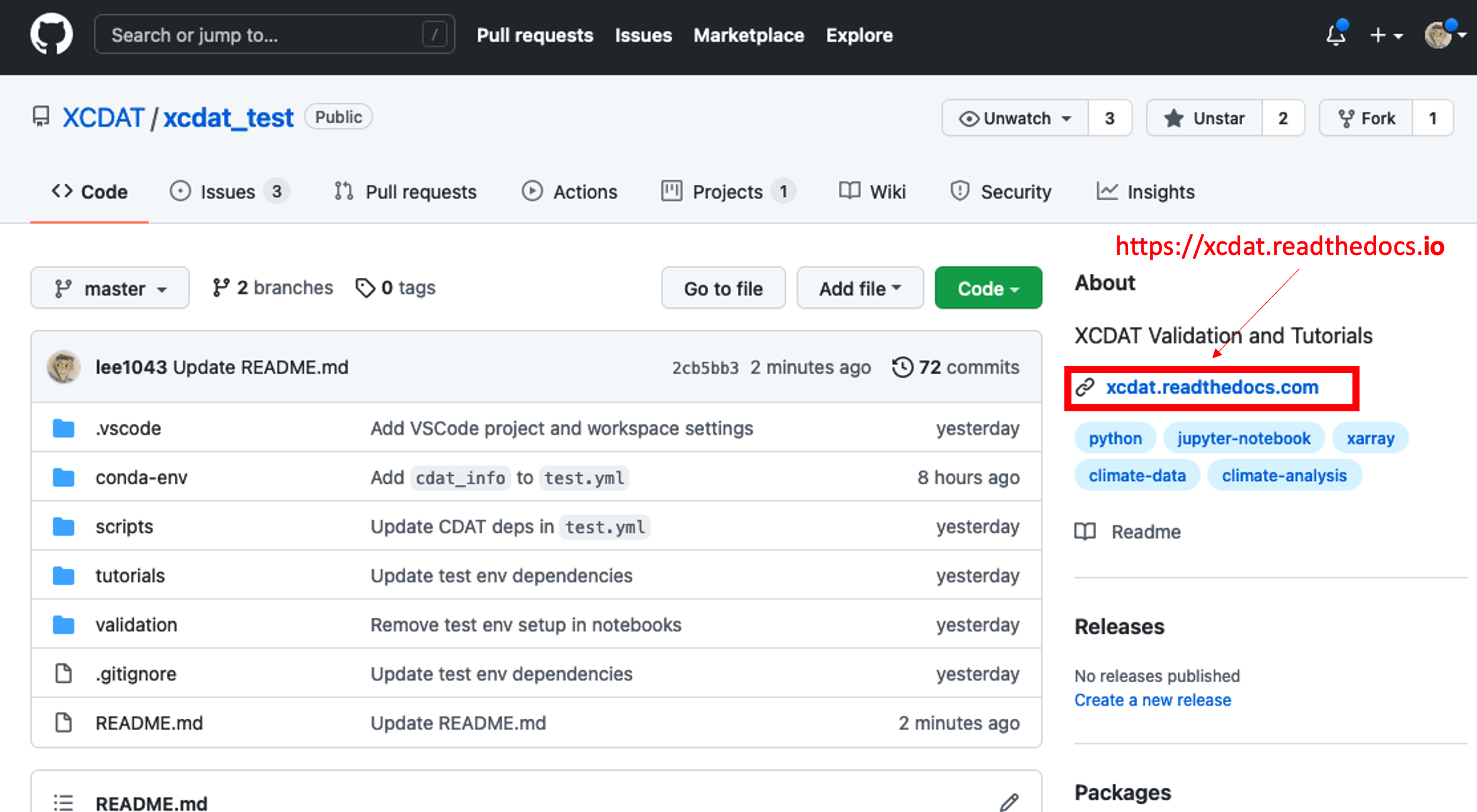xCDAT is an extension of xarray for climate data analysis on structured grids. It serves as a modern successor to the Community Data Analysis Tools (CDAT) library.
Useful links: Documentation | Code Repository | Issues | Discussions | Releases | Mailing List
The goal of xCDAT is to provide generalizable features and utilities for simple and robust analysis of climate data. xCDAT's design philosophy is focused on reducing the overhead required to accomplish certain tasks in xarray. xCDAT aims to be compatible with structured grids that are CF-compliant (e.g., CMIP6). Some key xCDAT features are inspired by or ported from the core CDAT library, while others leverage powerful libraries in the xarray ecosystem (e.g., xESMF, xgcm, cf_xarray) to deliver robust APIs.
The xCDAT core team's mission is to provide a maintainable and extensible package that serves the needs of the climate community in the long-term. We are excited to be working on this project and hope to have you onboard!
The best resource for getting started is the xCDAT documentation website. Our documentation provides general guidance for setting up xCDAT in an Anaconda environment on your local computer or on an HPC/Jupyter environment. We also include an API Overview and Gallery to highlight xCDAT functionality.
xCDAT is a community-driven open source project. We encourage discussion on topics such as version releases, feature suggestions, and architecture design on the GitHub Discussions page.
Subscribe to our mailing list for news and announcements related to xCDAT, such as software version releases or future roadmap plans.
Please note that xCDAT has a Code of Conduct. By participating in the xCDAT community, you agree to abide by its rules.
We welcome and appreciate contributions to xCDAT. Users and contributors can view and open issues on our GitHub Issue Tracker.
For more instructions on how to contribute, please checkout our Contributing Guide.
- Extension of xarray's
open_dataset()andopen_mfdataset()with post-processing options- Generate bounds for axes supported by
xcdatif they don't exist in the Dataset - Optional selection of single data variable to keep in the Dataset (bounds are also kept if they exist)
- Optional decoding of time coordinates
- In addition to CF time units, also decodes common non-CF time units ("months since ...", "years since ...")
- Optional centering of time coordinates using time bounds
- Optional conversion of longitudinal axis orientation between [0, 360) and [-180, 180)
- Generate bounds for axes supported by
- Temporal averaging
- Time series averages (single snapshot and grouped), climatologies, and departures
- Weighted or unweighted
- Optional seasonal configuration (e.g., DJF vs. JFD, custom seasons)
- Geospatial weighted averaging
- Supports rectilinear grid
- Optional specification of regional domain
- Horizontal structured regridding
- Vertical structured regridding
- Support rectilinear and curvilinear grids
- Extends the xgcm vertical regridding API
- xCDAT supports CF compliant datasets, but will also strive to support datasets with common non-CF compliant metadata (e.g., time units in "months since ..." or "years since ...")
- xCDAT leverages cf_xarray to interpret CF attributes on
xarrayobjects - Refer to CF Convention for more information on CF attributes
- xCDAT leverages cf_xarray to interpret CF attributes on
- Robust handling of dimensions and their coordinates and coordinate bounds
- Coordinate variables are retrieved with
cf_xarrayusing CF axis names or coordinate names found in xarray object attributes. Refer to Metadata Interpretation for more information. - Bounds are retrieved with
cf_xarrayusing the"bounds"attr - Ability to operate on both longitudinal axis orientations, [0, 360) and [-180, 180)
- Coordinate variables are retrieved with
- Support for parallelism using dask where it is both possible and makes sense
xCDAT (released as xcdat) follows a feedback-driven release cycle using continuous integration/continuous deployment. Software releases are performed based on the bandwidth of the development team, the needs of the community, and the priority of bug fixes or feature updates.
After releases are performed on GitHub Releases, the corresponding xcdat package version will be available to download through Anaconda conda-forge usually within a day.
Subscribe to our mailing list to stay notified of new releases.
We highly encourage you to checkout the awesome resources below to learn more about Xarray and Xarray usage in climate science!
xCDAT is actively being integrated as a core component of the Program for Climate Model Diagnosis and Intercomparison (PCMDI) Metrics Package and the Energy Exascale Earth System Model Diagnostics (E3SM) Package. xCDAT is also included in the E3SM Unified Anaconda Environment that is deployed on various U.S. Department of Energy supercomputers to run E3SM software tools.
xCDAT is jointly developed by scientists and developers from the Energy Exascale Earth System Model (E3SM) Project and Program for Climate Model Diagnosis and Intercomparison (PCMDI). The work is performed for the E3SM project, which is sponsored by Earth System Model Development (ESMD) program, and the Simplifying ESM Analysis Through Standards (SEATS) project, which is sponsored by the Regional and Global Model Analysis (RGMA) program. ESMD and RGMA are programs for the Earth and Environmental Systems Sciences Division (EESSD) in the Office of Biological and Environmental Research (BER) within the Department of Energy's Office of Science.
Thank you to all of our contributors!
xCDAT is licensed under the terms of the Apache License (Version 2.0 with LLVM exception).
All new contributions must be made under the Apache-2.0 with LLVM exception license.
See LICENSE and NOTICE for details.
SPDX-License-Identifier: Apache-2.0
LLNL-CODE-846944







